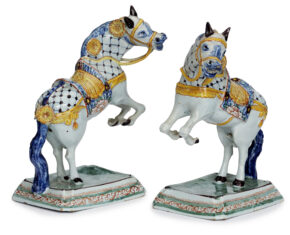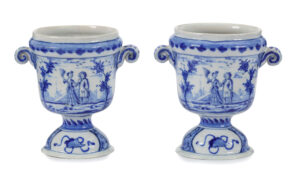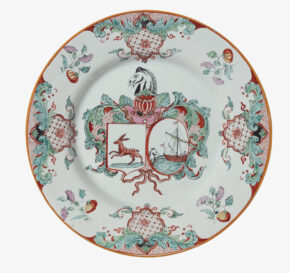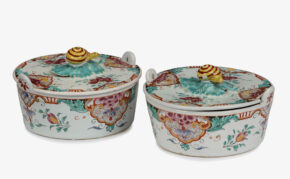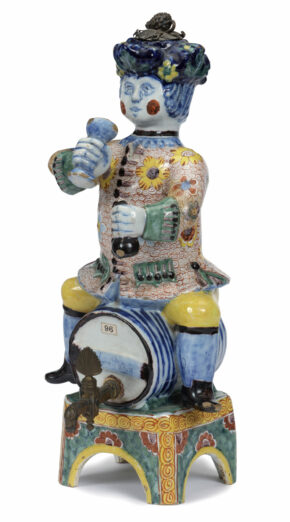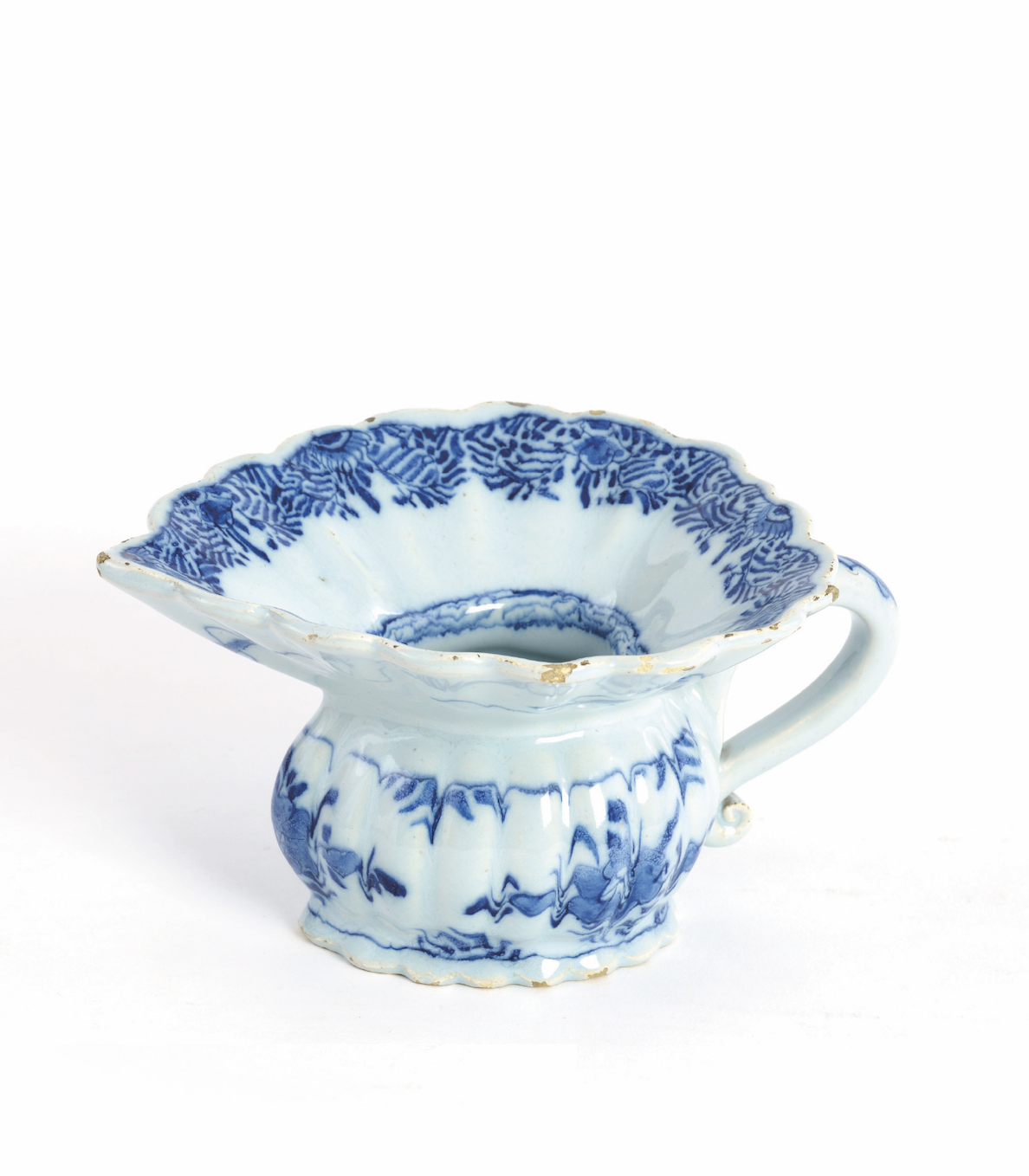
[popup_trigger id=”13756″ tag=”span”]![]() [/popup_trigger]
[/popup_trigger]
Images on this website are licensed under a
Creative Commons Attribution-NoDerivs 3.0 Unported License.
OBJECT
D2109. Blue and White Cuspidor
Delft, circa 1750
The leaf-shaped body painted with three stylized floral sprigs and affixed with a scroll handle decorated with two beribboned Chinese symbols, repeated on the underside of the flaring rim, and on the top with a wide border of demi-flowerheads and leafy stems within the scalloped and barbed egde, its form echoed on the foot rim.
Dimensions
Height: 8.2 cm. (3.2 in.)
Note
The word ‘cuspidor’ (kwispedoor) comes from the same word in Portuguese and denotes a more elegant version of the spittoon. The vessel and its function were introduced to the Netherlands by the Dutch East India Company (VOC). According to Van Dam 1991, p. 88, who illustrates on p. 89, no. 42, a cuspidor dated 1747, with the increased availability and use of tobacco for smoking or chewing, “in the course of the seventeenth century the cuspidor or spittoon came to be used in Europeˮ as a receptacle for the spitting of the tobacco juice, hence the generous rim to provide the user with a greater “chance of hitting the target.ˮ

